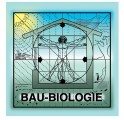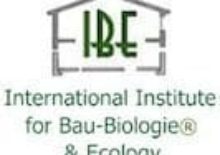Building Biology Inspection
Worried about Sick Building Syndrome and suspect your home or office is making you sick? Unsure where to begin environmental testing or what sort of expert industrial hygienist you need? The Institute for Building Biology and Ecology offers the most comprehensive protocols for building biology assessments and indoor environmental assessments in the United States. There are fewer than 100 practicing Building Biologists providing inspection services in the US.
Healthy Building Science offers unique and comprehensive environmental inspection services that include air testing, mold testing, water testing, and electromagnetic field (EMF) surveys. Building Biologists treat the building as a system and combine expertise from many different disciplines to offer a very thorough environmental assessment. Most Building Biology trainings in the US focus on home inspection techniques, though some US Building Biologists are experienced in all building types.
There are literally thousands of untested chemicals produced in the US everyday. These chemicals infiltrate manufacturing and enter buildings in the form of composite wood, vinyl flooring, adhesive, paints, etc. There are also a number of natural contaminants that can find their way into buildings and negatively affect occupant health. Obvious naturally occurring building pollutants include asbestos and lead, but also bacteria from sewage contamination or mold growth from water damage.
Healthy Building Science is one of the few companies in the US offering Building Biology Surveys as well as Lead Inspections and Asbestos Surveys. The latter both require expert building inspectors to have additional training and certifications.
Building Biology assessments are designed to evaluate more indoor pollutants than any other “healthy building inspection” protocol available in the US. Using this holistic approach, HBS offers a unique glimpse into what exists within the walls of your building, and provides practical suggestions on how to improve your indoor environment. A one-stop-shop for building environmental assessments, HBS targets what counts most.
San Francisco Sick Building Syndrome
There are two primary variables in every Building Biology Inspection: Client and Building
After completing a survey about occupants and the building, a Healthy Building Inspector arrives with meters and testing equipment to assess the building. Building upon the pre-inspection survey and a walk-through of the building we make a hypothesis about what pollutants are present and how they may be entering the building.
Environmental testing is sometimes useful to test the hypothesis. Environmental tests performed vary per building, but may include soil testing, air quality testing, water quality testing, and EMF testing. Your final user-friendly report includes a summary of findings, interpretation of lab results (if any), photos to help illustrate complex building issues, and suggestions for practical steps for mitigation.
Building Biology Case Studies
Success stories from all of our Home Inspection Services can be applied to Building Biology inspections, because Building Biology assessments include almost every measurable indoor pollutant. Using this German-based inspection protocol we have found pollutants, previously unknown to the owner, in every single building we have inspected. When you test for everything you’re bound to find some areas for improvement.
No one rating system can isolate every possible environmental angle, and the International Institute of Building Biology founders were certainly most interested in human health, but it is hard to imagine a more comprehensive healthy building checklist than the Building Biology 25 Principles.
It is quite difficult to incorporate every principle into a single building project, and I would say even more difficult than implementing the Living Building Challenge prerequisites. An astute reader will realize that some Building Biology Principles are the exact opposite of some LEED credits. For instance, LEED promotes developing contaminated sites (aka “brown fields”) in densely populated areas, while Building Biology discourages building on “disturbed” land without “sufficient green space.” To my knowledge, Building Biology has the most human-health focused building design guidelines in the US. The WELL Building Standard is in second place.
For those entrenched green building consultants who only know one rating system… it’s time to branch out and learn about Building Biology Healthy Home Standard, the Green Guide for Health Care (GGHC), GreenPoint Rated, etc. Each system has its strengths and weaknesses, and a well-rounded consultant should be familiar with all these innovative rating systems. As an industrial hygiene company we are naturally fans of LEED and WELL because they encourage environmental testing to verify performance of indoor environmental quality goals.

Other Green Building Rating Systems
The 25 Principles of “Baubiologie” (Building Biology)
- Building site without natural and human-made disturbances
- Residential homes away from sources of emissions and noise
- Low-density housing with sufficient green space
- Personalized, natural, human- and family-oriented housing and settlements
- Building without causing social burdens
- Natural and unadulterated building materials
- Natural regulation of indoor air humidity through humidity-buffering materials
- Low total moisture content of a new building that dries out quickly
- Well-balanced ratio between thermal insulation and heat retention
- Optimal air and surface temperatures
- Good indoor air quality through natural ventilation
- Heating system based on radiant heat
- Natural conditions of light, lighting and color
- Changing the natural balance of background radiation as little as possible
- Without human-made electromagnetic and radio frequency radiation (RFR) exposure
- Building materials with low radioactivity levels
- Human-oriented noise and vibration protection
- With a pleasant or neutral smell and without outgassing toxins
- Reduction of fungi, bacteria, dust and allergens as low as possible
- Best possible drinking water quality
- Causing no environmental problems
- Minimizing energy consumption and utilizing as much renewable energy as possible
- Building materials preferably from the local region without promoting exploitation of scarce and hazardous resources
- Application of physiological and ergonomic findings to interior and furniture design
- Consideration of harmonic measures, proportions and shapes
If you’ve got a project in California and want to implement the 25 Principles of Building Biology – Healthy Building Science is your one-stop-shop!
CLICK HERE to Find a Building Biologist Outside San Francisco Bay Area
Building Biology Consulting San Francisco Bay Area Projects:
- Los Altos Building Biology Inspection and new building consulting
- San Rafael Building Biology remodel consulting
- Berkeley Building Biology EMF testing for schools
- Santa Rosa Building Biology soil and water testing and consulting
- San Jose Building Biology home inspections
- Oakland Building Biology home inspections
- Sunnyvale Building Biology air testing and EMF testing
- Piedmont Building Biology consulting for gut remodel
Healthy Building Science has a Certified Building Biology Environmental Consultant (BBEC) on staff.
Healthy Building Science is an environmental consulting firm which provides Building Biology surveys, expert industrial hygiene and environmental testing for multi-family building, commercial offices, industrial and manufacturing workplaces, hospitals and medical facilities, schools and even single-family homes in the greater San Francisco Bay Area and all of Northern California including the cities of San Francisco, San Jose, Oakland, Sacramento, Santa Rosa, Hayward, Sunnyvale, Fremont, Concord, Salinas, Santa Clara, Berkeley, Vallejo, Fairfield, Antioch, Richmond, Daly City, San Rafael, San Mateo, Vacaville, San Leandro, Livermore and Alameda County, Contra Costa County, Marin County, Napa County, San Mateo County, Santa Clara County, Solano County and Sonoma County.
Call next time you need a Building Biologist or Building Biology Survey (415- 785-7986), or COMPLETE THIS ONLINE FORM.


